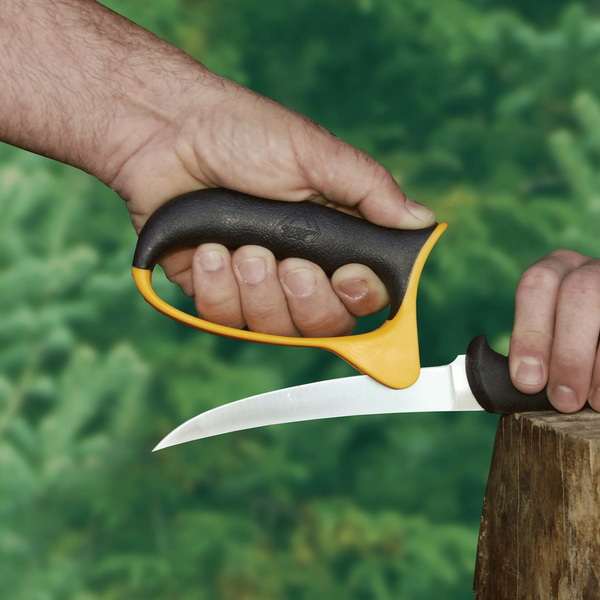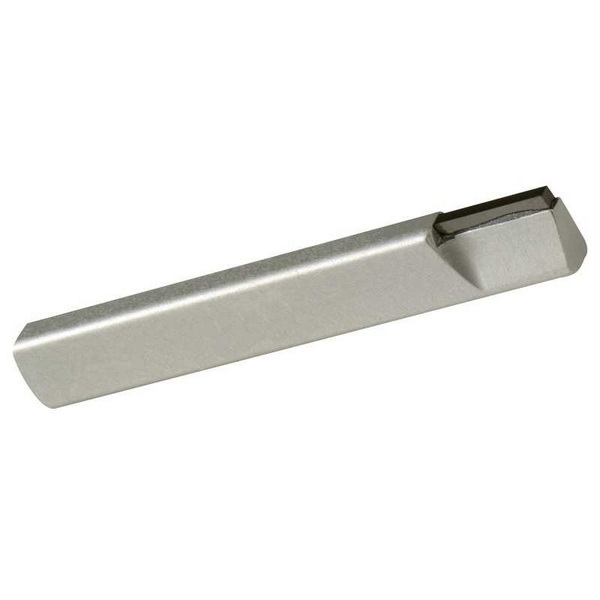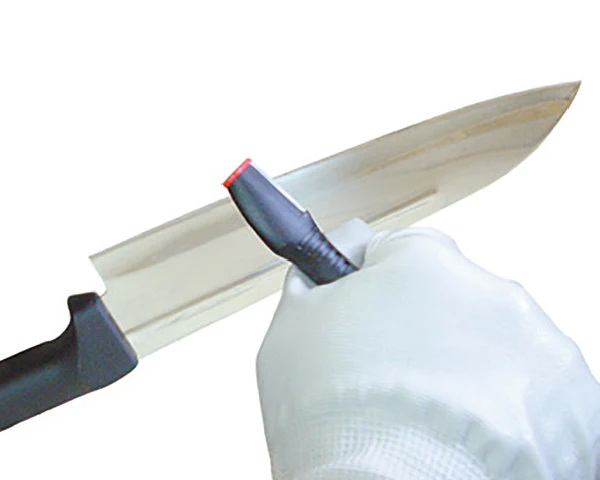Content Menu
● 1. Selecting the Right Carbide Insert
>> Material Compatibility
>> Geometry and Coatings
● 2. Optimizing Cutting Parameters
>> Speed, Feed, and Depth Balance
● 3. Tool Setup and Maintenance
>> Precision Toolholding Systems
● 4. Advanced Coatings and Geometries
>> Nanostructured Coatings
● 5. Carbide Insert Production: A Step-by-Step Process
>> Stage 1: Powder Metallurgy
>> Stage 2: Compacting
>> Stage 3: Sintering
>> Stage 4: Grinding & Coating
● 6. Digital Monitoring Solutions
>> IoT-Enabled Tool Management
● 7. Industry-Specific Applications
>> Oil & Gas Drilling Components
>> Military Armor Machining
● Conclusion
● FAQs
>> Q1: How do I choose the right carbide insert grade for stainless steel?
>> Q2: What are the key steps in carbide insert production?
>> Q3: Can carbide inserts be reused after wear?
>> Q4: Why do carbide inserts require diamond grinding?
>> Q5: How do coatings improve insert performance?
● Citations:
Carbide inserts have become indispensable in modern machining, offering unparalleled precision, durability, and cost-effectiveness. These tungsten carbide-based tools are widely used across industries like aerospace, automotive, oil exploration, and military equipment manufacturing, where efficiency and accuracy are critical. By optimizing their use, manufacturers can reduce cycle times by up to 40%, improve surface finishes to sub-micron levels, and extend tool life by 3–5× compared to traditional high-speed steel. This article explores practical strategies to maximize machining efficiency with carbide inserts, delves into their production process, and addresses common questions.

1. Selecting the Right Carbide Insert
Material Compatibility
Carbide inserts are engineered for specific materials. For aluminum, polished inserts with sharp edges (15–25° rake angles) minimize built-up edge formation, while cast iron machining benefits from cubic boron nitride (CBN) or ceramic-coated inserts. Titanium alloys require grades with high cobalt content (8–12%) for improved fracture resistance.
Key Considerations:
- Workpiece Hardness: Match ISO grades (e.g., K10 for cast iron, P20 for steel).
- Abrasiveness: Silicon-rich materials demand inserts with Al₂O₃ coatings.
Geometry and Coatings
Insert Geometry:
- Positive Rake Angles (15–20°): Reduce cutting forces in aluminum.
- Negative Rake Angles (-6°): Provide stability in heavy roughing of hardened steel.
Coatings:
- TiAlN (Titanium Aluminum Nitride): Withstands 800°C for high-speed machining.
- DLC (Diamond-Like Carbon): Reduces friction in non-ferrous materials.
Case Study: A German automotive plant increased milling speeds by 22% using Sandvik's GC4325 TiAlN-coated inserts for crankshaft production.
2. Optimizing Cutting Parameters
Speed, Feed, and Depth Balance
Use the Taylor Tool Life Equation:VTn=C
Where:
V = Cutting speed (m/min)
T = Tool life (min)
n,C = Material constants
Parameter Guidelines:
| Material | Speed (m/min) | Feed (mm/tooth) | Depth (mm) |
| Aluminum 6061 | 300–600 | 0.15–0.3 | 2–5 |
| Stainless 316L | 80–120 | 0.1–0.2 | 1–3 |
Coolant Optimization:
- Minimum Quantity Lubrication (MQL): Reduces coolant use by 90% in finishing.
- High-Pressure Jet (300 bar): Breaks chips in deep-pocket milling.
3. Tool Setup and Maintenance
Precision Toolholding Systems
- Hydraulic Chucks: Maintain <0.003 mm runout for finishing.
- Thermal Shrink Fit: Provides superior grip for heavy roughing.
Maintenance Checklist:
1. Clean seats with ultrasonic baths to remove micro-debris.
2. Inspect clamping forces monthly (≥200 N·m for 16 mm shanks).
3. Replace worn screws every 500 insert changes.

4. Advanced Coatings and Geometries
Nanostructured Coatings
- AlCrN (Aluminum Chromium Nitride): 30% harder than TiAlN, ideal for aerospace titanium.
- Hybrid CVD/PVD Layers: Combine crack resistance (CVD) with smooth surfaces (PVD).
Chipbreaker Innovations:
Kennametal's 3D-printed chipbreakers create predictable chip curl in Inconel 718, reducing machine downtime by 18%.
5. Carbide Insert Production: A Step-by-Step Process
Stage 1: Powder Metallurgy
- Raw Materials: Tungsten carbide (WC) powder (0.5–3 µm grains) mixed with 6–12% cobalt binder.
- Milling: Ball milling for 24–72 hours achieves uniform particle distribution.
Stage 2: Compacting
- Uniaxial Pressing: 200–400 MPa pressure forms "green" inserts.
- Isostatic Pressing: For complex shapes, apply 600 MPa hydrostatic pressure.
Stage 3: Sintering
- Vacuum Sintering: Heat to 1,480°C for 10–15 hours, achieving 99.5% density.
- HIP (Hot Isostatic Pressing): Eliminates residual porosity in premium grades.
Stage 4: Grinding & Coating
- Diamond Grinding: 0.01 mm accuracy using 800-grit diamond wheels.
- Laser Marking: Adds permanent ISO grade identification.
Quality Control:
- Hardness Testing: 1,500–2,000 HV30 (Vickers scale).
- X-Ray Inspection: Detects internal defects ≥50 µm.
6. Digital Monitoring Solutions
IoT-Enabled Tool Management
- Vibration Sensors: Detect chatter using FFT analysis.
- RFID Tags: Track insert usage history and remaining life.
Data-Driven Example:
A U.S. aerospace supplier reduced insert waste by 35% using Sandvik Coromant's CoroPlus® ToolGuide.
7. Industry-Specific Applications
Oil & Gas Drilling Components
- PCD-Tipped Inserts: Machine valve seats in HPHT (High-Pressure High-Temperature) environments.
- Through-Coolant Designs: Enable 30x diameter depth in deep well drilling tools.
Military Armor Machining
- Ballistic-Grade Inserts: Cut aramid composites without delamination using 70° rhombic geometries.
Conclusion
From powder metallurgy to digital monitoring, carbide inserts represent the pinnacle of cutting tool technology. By mastering material selection, parameter optimization, and production science, manufacturers can achieve:
- 25–40% faster cycle times
- 50% longer tool life
- Sub-5µm surface finishes
As additive manufacturing and AI-driven tool management advance, next-gen carbide inserts will unlock even greater efficiencies. Companies investing in these technologies today will dominate tomorrow's precision machining landscape.

FAQs
Q1: How do I choose the right carbide insert grade for stainless steel?
A1: Opt for grades with high cobalt content (8–10%) like Sandvik GC2135. TiAlN coatings prevent crater wear in 316L stainless steel at 120 m/min speeds.
Q2: What are the key steps in carbide insert production?
A2: The process involves powder mixing, compacting under 400 MPa, vacuum sintering at 1,500°C, diamond grinding, and multilayer coating via CVD/PVD.
Q3: Can carbide inserts be reused after wear?
A3: Indexable inserts allow 4–8 cutting edges. Worn edges can be reconditioned via laser cladding, restoring 80% of original performance.
Q4: Why do carbide inserts require diamond grinding?
A4: With hardness reaching 2,000 HV, only diamond abrasives (3,000–10,000 HV) can achieve the required ±0.002 mm tolerances.
Q5: How do coatings improve insert performance?
A5: A 3-µm TiAlN coating reduces flank wear by 60% in steel machining by forming a protective Al₂O₃ layer at 800°C.
Citations:
[1] https://www.estoolcarbide.com/article/carbide-turning-inserts-enhancing-precision-and-efficiency-in-metal-machining-newsinfo-33.html
[2] https://www.estoolcarbide.com/article/how-to-determine-the-best-carbide-inserts-for-your-machining-operations-newsinfo-58.html
[3] https://wencerl.com/the-advantages-of-carbide-inserts-in-high-performance-machining/
[4] https://www.istockphoto.com/photos/carbide-cutter-insert
[5] https://www.alamy.com/stock-photo/carbide-insert.html
[6] https://cdn.sandvik.coromant.com/files/sitecollectiondocuments/tools/inserts-and-grades/birth-of-an-insert-infographic/birth-of-an-insert-infographic-enu.pdf
[7] https://huanatools.com/what-are-carbide-inserts-and-how-are-carbide-inserts-made/
[8] https://www.dohrecnc.com/news/tips-of-buying-carbide-inserts.html
[9] https://onmytoolings.com/faq/
[10] https://www.cobracarbide.com/5-strategies-for-maximizing-efficiency-with-carbide-inserts/
[11] https://wencerl.com/how-to-make-carbide-inserts-a-comprehensive-guide/
[12] https://huanatools.com/an-in-depth-guide-on-carbide-inserts-for-aluminum/
[13] https://metalworking.in/buying-guide-selecting-carbide-inserts-for-metalworking/
[14] https://www.kennametal.com/in/en/resources/blog/metal-cutting/selecting-carbide-inserts-for-metalworking.html
[15] https://www.cargocarbide.com/pages/maximizing-machining-efficiency-with-dnmg-inserts-a-comprehensive-guide/672cd3f2c27f3515641472de
[16] https://www.shutterstock.com/search/carbide-milling-insert
[17] https://www.shutterstock.com/search/carbide-turning-insert
[18] https://www.freepik.com/photos/carbide-insert
[19] https://www.mmc-carbide.com/in/products/turning_tools/turning_insert
[20] https://dir.indiamart.com/impcat/carbide-inserts.html
[21] https://www.asphaltcarbidetools.com/carbide-turning-insert.html
[22] https://www.reddit.com/r/Skookum/comments/7exk8b/how_tungsten_carbide_inserts_are_made/
[23] https://www.vmtools.co.in/carbide-insert-2575589.html
[24] https://www.linkedin.com/pulse/common-questions-problems-carbide-bits-scott-bahr
[25] https://applecarbidetools.com/a-comprehensive-guide-to-carbide-turning-inserts-and-machining-efficiency/
[26] https://www.cobracarbide.com/beginners-guide-how-to-select-the-right-carbide-inserts/
[27] https://www.gabrielditu.com/tools/benefits-of-using-carbide-inserts.html
[28] http://www.boyuecarbide.com/article/how-can-you-maximize-the-efficiency-of-carbide-milling-inserts-newsinfo-43.html
[29] https://www.estoolcarbide.com/article/how-do-cnc-carbide-inserts-benefit-turning-operations--newsinfo-39.html
[30] https://www.alamy.com/stock-photo/carbide-inserts.html
[31] https://www.istockphoto.com/photos/carbide-insert
[32] https://www.shutterstock.com/search/carbide-insert
[33] https://www.shutterstock.com/search/lathe-carbide-inserts
[34] https://stock.adobe.com/search/images?k=carbide+cutting
[35] https://www.youtube.com/watch?v=0QrynzJ_lZ4
[36] https://www.linkedin.com/pulse/from-powder-finished-product-how-carbide-insert
[37] https://huanatools.com/how-to-make-the-carbide-inserts/
[38] https://jaibros.com/blogs/from-our-blog/decoding-of-insert-size-angel-specification-and-grades
















